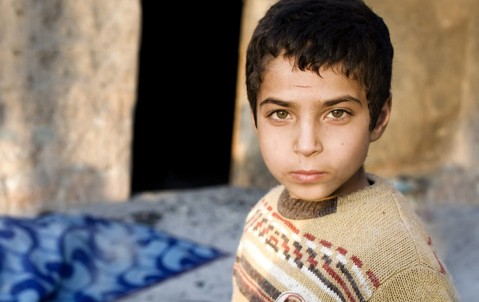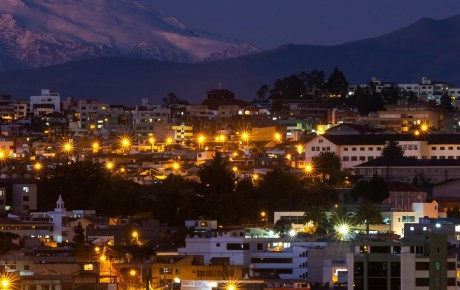
Al-Qaida: global terrorism’s Hydra
The terrorist group’s core command is fighting for its existence, but al-Qaida splinter groups dotted around the globe pose an increasingly deadly threat.
The terrorist group’s core command is fighting for its existence, but al-Qaida splinter groups dotted around the globe pose an increasingly deadly threat to Western states’ homeland security as well as their overseas interests.
The attacks against the United States on September 11 2001 were a watershed moment for the West. Twelve years – and two ground wars launched in the name of homeland security – since those acts, al-Qaida still poses the principal global terror threat to Western interests around the world. But, as the danger presented by al-Qaida core network in Pakistan has been diminished, a number of affiliated groups have sprung up across North Africa, the Middle East and South Asia that pose as much of a threat – if not more – as their mentor.
Concerted U.S.-led counterterrorism efforts, particularly in Pakistan’s Federally Administered Tribal Areas – the wild and rugged region neighbouring Afghanistan – have weakened core al-Qaida: killing its totemic leader Osama bin Laden, shutting down some of its training camps, freezing its finances and severely limiting its communications with the outside world.
Core al-Qaida is fighting for its survival; but though it has not launched a successful Western attack since the London Tube bombings in July 2005, it remains a potent threat. A string of attacks it planned in the United States, Norway, Denmark, the UK, Germany and Pakistan are publicly known because they were uncovered and foiled; while documents seized in Berlin in 2012 reveal ideas for it to seize cruise ships and carry out mass gun attacks in Europe.
But although core al-Qaida is in retreat, its brand remains strong. A number of affiliate groups have emerged: al-Shabab in Somalia; al-Qaida in the Islamic Maghreb (QIM) in Algeria and Mali; Haqqani Network and Pakistani Taliban in Pakistan; and al-Qaida in the Arabian Peninsula (AQAP) in Yemen.
Although they mostly pursue local or regional agendas, several of these groups have the capability and ambition to strike outside the borders of the countries in which they are based. AQAP has made at least two attempts to launch attacks against the U.S. homeland: Nigerian Umar Farouk Abdulmutallab tried to detonate a bomb aboard Northwest Flight 253 over Detroit on Christmas Day 2009; it also plotted to blow up airfreight airliners in 2010 using sophisticated bombs hidden inside printer-ink cartridges.
The Pakistani Taliban (TTP), another al-Qaida affiliate, demonstrated its intent and ability to attack the United States, with a failed car bomb attack on Times Square in May 2010 by Faisal Shahzad, a naturalised U.S. citizen of Pakistani descent. Al-Shabab carried out two bomb attacks in the Ugandan capital Kampala in July 2010, which killed scores of people.
Arab Spring: opportunity for al-Qaida
The speed with which popular uprisings toppled the regimes in Tunisia and Egypt in 2010 and 2011 took everyone, including al-Qaida, by surprise. People power succeeded in overthrowing Egypt’s strongman president Hosni Mubarak in 18 days – a feat which Ayman al-Zawahiri, bin Laden’s successor as head of core al-Qaida and founder of Egyptian militant group Islamic Jihad, failed to achieve in 45 years of plotting.
But the political and security vacuums created by these popular revolutions have enabled al-Qaida affiliates to establish footholds in those countries. Jabhat al-Nusra (which recently pledged its allegiance to al-Qaida) is gaining ground in Syria, while Mali, Libya, Nigeria and Egypt contain al-Qaida-inspired groups that are working with local militants. An al-Qaida splinter group was responsible for the January 16 attack on the In Amenas gas facility in Algeria.
Several of these local al-Qaida-linked groups had been harried and suppressed by the security apparatus of the previous authoritarian regimes; their overthrow has allowed the terrorist groups increasing space to grow and emboldened them to carry out more attacks, both within their host countries and across borders. Fighters from the Saharan branch of al-Qaida, for example, were quick to exploit the upheaval in Mali, moving into the lawless northern region to seize control, before being contained by a French-led military force.
This instability – which is a breeding ground for extremism – will continue for the next five, ten or even 15 years.
The euphoria created by the uprisings has turned to disillusion, says Richard Halstead, War, Terrorism and Political Violence Deputy Line Underwriter at Hiscox. “Despite the unpopular governments being swept away, many of the drivers behind the unrest remain. These populations are facing lower standards of living now due to rising food and energy prices, as well as high unemployment – especially among young people. Many of them are better educated than their parents and they’re frustrated by the lack of jobs and opportunity, by the repression and the absence of basic rights. The rise of social media has allowed them to see how things are better in other countries and given them a medium through which to vent their anger.”
Halstead concludes: “This instability – which is a breeding ground for extremism – will continue for the next five, ten or even 15 years.”
Al-Qaida groups have sought to exploit the persistent social and economic injustices that helped trigger the Arab Spring uprisings. Poverty, corruption and oppression create a toxic brew of personal, political and ideological grievances for disaffected youths that have created ideal recruiting conditions for al-Qaida. They have sought to promote themselves in these countries by casting themselves as part-political movement, part-humanitarian charity in addition to their traditional role as extremist militia.
This creates a longer-term threat, which could be termed the Hezbollah dilemma: that by pulling on a cloak of respectability, militant groups are no longer viewed internationally as terrorist threats. Lebanon’s Hezbollah has avoided being branded a terrorist organisation by the international community – despite its repeated rocket attacks on Israel – because it has become deeply enmeshed in Lebanon’s political and social infrastructure. But by doing so, Hezbollah has also created for itself a continual stream of recruits on which it can call for its militant activities.
Continued unrest in the region draws attention to the biggest prize of all for jihadists and the lynchpin of Western security in the Middle East for more than 50 years: Saudi Arabia. Core al-Qaida’s reason for being was to establish an Islamic caliphate, and, in doing so, liberate Muslim lands from non-Muslim occupation and their “puppet rulers”. Attacks on Western targets were arguably just one of the means of accomplishing this. There is no reason to suppose these overarching objectives of al-Qaida have changed. Recognising this, the House of Saud responded swiftly to the overthrow of the Tunisian and Egyptian regimes, with a multi-billion-dollar package of welfare reforms. The policy seems to have worked so far, but the Saudi budget is precariously balanced on an oil price of just under $100 per barrel; a sustained decline in the oil price could put the government’s generous social programme under pressure, although cutting it back could fan the flames of popular discontent.
DIY terrorism: the growing danger
As the U.S and other governments have ramped up their counterterrorism efforts, they have managed to thwart a number of attacks attempted by core al-Qaida and its affiliates. The terrorist groups have responded by adopting a twin-track strategy: inspiring and encouraging small-scale random attacks, while continuing to try to pull off more sophisticated, well-orchestrated plots.
Western governments’ success in foiling plots has forced jihadists to strengthen their countermeasures to avoid detection. The result has been a shift in focus for core al-Qaida towards offering arms-length encouragement and support to individuals or tiny cells of homegrown militants to plan and execute their own small-scale attacks.
There has been a spate of DIY terrorist attacks launched by homegrown violent extremists in recent years. These include Nidal Hassan, whose 2009 shooting spree at Fort Hood killed 13 and wounded 43; Najibullah Zazi, who plotted to explode bombs on the New York subway in 2008/9; and Mohamed Merah, who shot seven people in Toulouse in March 2012. Recent months have seen a double-bomb attack in Boston, which killed three people and injured nearly 300, the killing of a soldier in Woolwich, southeast London and the stabbing of a soldier in Paris. The men responsible for all these attacks were either born and bred in these countries or long-term residents there who were converts to radical Islam.
Unable to train recruits itself after the destruction of many of its camps, al-Qaida has exploited the online revolution to try to further the cause of global jihad, by using the internet to spread propaganda, recruit disaffected people to their cause, help in training and fundraising, and connect lone wolfs with other extremists.
Hassan, a US army major, was radicalised to gun down his army colleagues by watching fiery anti-Western sermons by US-born cleric (and former AQAP leader) Anwar al-Awlaki that had been posted online.
In 2010, AQAP launched a glossy, English-language online magazine, called Inspire, containing religious justification for launching terror attacks, tips on how to make bombs and using an AK-47.
Al-Qaida was quick to learn the lessons of how social media played a pivotal role in fomenting and inspiring the Arab Spring uprisings. As a result, the Afghan Taliban, al-Shabab and QIM all have their own Twitter feeds.
The main threat to Western countries in the next three to five years will be from homegrown DIY terrorists, says Jonathan Wood, Associate Director of Strategic Analysis at Control Risks. “Due to increased homeland security, terrorist groups have been forced to rely on inspiring homegrown radicals, rather than deploying experienced operatives to carry out attacks in Western Europe and North America. This makes the threat broadly less severe, but also less predictable.”
The risk of homegrown terrorists in Europe has been further exacerbated by a combination of factors:
- The global economic problems have put pressure on Western governments to scale back their counter-terrorism activities, with the potential to reverse the good work done since 9/11
- These governments’ austerity policies have been widely regarded by the poorest members of their societies to have hit them hardest, creating fertile conditions for their radicalisation
- Economic hardship has led to a perceived reduction in tolerance for multiculturalism and immigration.
Most of these new recruits have not had the benefit of high quality jihadi training – unlike their predecessors who travelled to al-Qaida camps in Afghanistan, Iraq and Somalia – so their capability to pull off spectacular attacks is limited. Their methods would likely be to commit Mumbai-style gun or grenade attacks on high-profile targets on U.S. or European soil. “In our opinion, attacks similar to the Boston Marathon bombing or the Woolwich killing will become more commonplace,” says Paresh Thakrar, part of Hiscox’s new counter - terrorism unit.
Spreading online jihad
Beyond exploiting the web as a propaganda and training tool, al-Qaida is increasingly looking to use it also as a direct weapon in its holy war against the West.
It has exhorted followers to carry out online attacks on Western interests, declaring: “Hacking on the Internet is one of the key pathways to Jihad.” In its first major statement following bin Laden’s death in 2011, it called on extremists to commit acts of cyber terrorism, comparing the state of America’s internet defences with its lax physical defences prior to 9/11.
Few terrorist organisations are currently believed to be actively pursuing a chemical/biological capability
One cyber terrorism attack has already been launched earlier this year. The Tunisian Cyber Army and a group calling itself the “Al-Qaida Electronic Army” encouraged fellow extremists to join them in targeting U.S. vital services as part of “Operation Black Summer”.
Control Risks’ Wood says: “Cyber terrorism has the potential to become a more significant threat, although it remains to be seen if such attacks are a physical security threat or merely an operational nuisance. But further politicised hacktivist attacks linked to an Islamist extremist agenda, are very likely and may create disruptions that lead to a business loss.”
Conflict in Syria: the chemical accelerant in a new wave of terrorism?
A bigger potential threat than online attacks is the prospect of chemical or biological terrorism against Western interests.
The U.S. has suffered two homegrown chemical terrorism attacks since 2001. The first came just days after the 9/11 attacks, when anthrax-laced letters were sent to media organisations and two U.S. senators, killing five people and making 17 others sick. The second, in April of this year, saw letters containing ricin sent to President Obama, a senator and a judge.
This second unsuccessful attack, which evidence so far suggests was a malicious attack by a disgruntled individual, not a terrorist organisation proves two things: how relatively easy it is to produce this potentially deadly toxin; and how a dedicated and motivated terrorist cell could potentially wreak havoc by a well-orchestrated campaign.
“Few terrorist organisations are currently believed to be actively pursuing a chemical/biological capability. But, as the recent ricin letters suggest, it would be likely to be achievable by a dedicated and motivated cell,” says Control Risks’ Wood.
Syria’s descent into bitter sectarian civil war, presents by far the bigger danger to the West. The Syrian government is known to possess a vast stockpile of chemical weapons, and the prospect of some of those falling into the hands of Jabhat al-Nusra, al-Qaida’s Syrian affiliate, or another extremist organisation, is causing growing concern among Western governments.
Israel has made it clear that if the Syrian government loses control over its chemical weapons, or transfers them to the Lebanese Hezbollah militia – Israel’s archenemy in the region – it will feel compelled to act. It has already launched several aerial attacks deep within Syrian territory reportedly to destroy arms convoys it claims were intended for Hezbollah, as well as attacking what some Western experts say is a chemical-weapons factory on the outskirts of Damascus.
“If Syrian chemical weapons were deliberately proliferated or otherwise obtained by militant groups, it would have serious implications for regional security,” says Control Risks’ Wood.
The main threat from Syria’s civil war is that it becomes the new training ground for radicalised European Muslims. “Thousands of foreign fighters were sucked into the Iraqi conflict. But the local Shia militias and US forces eliminated them and, as a result, their impact was localised. The risk in Syria is that there is a conflict, which ends rapidly, releasing trained Muslim fighters to return to Europe and create a new, more capable domestic threat,” says Thakrar.
Since the 9/11 attacks, the U.S. and its allies have been involved in a continuing battle against al-Qaida. As their counterterrorist efforts have become more successful, so the danger posed by al-Qaida has morphed, from that of a tight-knit, very hierarchical core group attempting spectacular attacks against Western countries, to a much more diverse threat from a broad coalition of regional affiliates. Each has its own individual manifestos (which sometimes are competing), but all have a common goal – to wage jihad against the West. Their operatives are different, with raw homegrown extremists increasingly taking over from highly trained jihadists. The weapons at their disposal have changed too: the gun and suicide bomb as opposed to the airliner. But the weapons of tomorrow might be even more potent: the computer mouse and, perhaps, the laboratory vial.
Where in the world – apart from Africa—will the terrorist risk increase over the next three to five years?
Jonathan Wood, Associate Director of Strategic Analysis at Control Risks:
“South Asia is certainly a key region to watch, given the high likelihood that security conditions in Afghanistan – and potentially Pakistan – will worsen following the withdrawal of NATO and US forces in 2014.
“Indian security officials express concern that, once NATO forces have left the region, Pakistani militant groups will re-focus on Kashmir and India, and may potentially attempt to build stronger relationships with domestic Indian Islamist extremists.
“Russia and the states of the former Soviet Union may also be a concern, given the reports of rising Islamism below the radar in interior provinces and cities, some of which stems from the continuing insecurity in the North Caucasus.
“In the Middle East and Levant regions, much depends on the outcome of the Syria conflict. If parts of Syria become a safe haven for jihadist and militant groups – al-Qaida in Iraq’s partner organisation Jabhat al-Nusra is currently very active – then this could put neighbouring countries at increased threat. Similarly, a regional devolution into conflict – potentially triggered by conflict with Iran, or fallout from Syria – could lead to increased terrorism or terrorist-style attacks in countries like Lebanon.”
Why businesses need to consider war, terror and political violence insurance
Security agencies in Europe and North America have scored some notable successes in gathering and acting on intelligence to prevent large scale acts of terror on their soil, but Western businesses doing business in volatile parts of the world remain vulnerable.
“I think the situation on the ground across North Africa and some of the Middle East makes it very difficult for intelligence agencies to do anything to prevent terrorist activities locally. So foreign companies operating in these regions need to have the peace of mind of knowing their staff and assets are adequately protected,” says Charles Rawlins, War, Terrorism and Political Violence Line Underwriter at Hiscox.
Western companies ranging from shops and banks through to mining companies and oil and gas producers are increasingly at risk from protesters as well as being targeted by militant and terrorist groups, motivated either by a local, regional or international agenda.
Events in recent years have shown that the differences between war, terrorism and political violence cover have become increasingly blurred in hostile or politically divided countries.
Israel’s invasion of Lebanon in 2006 to try to prevent Hezbollah rocket attacks; the popular uprisings that toppled the authoritarian regimes in Tunisia, Libya, Egypt and Yemen during the Arab Spring; the anti-government protests that engulfed Bangkok in 2009/10. All of these events highlighted the weakness of policies that rely on neat legal definitions of events, rather than much messier real life events. Clients who suffered losses in these events were unsure of whether they were covered under their existing, narrow policies.
Hiscox has removed this uncertainty for its clients by developing a war, terrorism and political violence (WTPV) policy to protect clients against physical damage and business interruption directly caused by acts of war, terrorism, sabotage and conflicts in which a war has not been declared.
Hiscox has also responded to the changing threats to multinational companies by combining its WTPV, kidnap, political risks and personal accident covers to deliver a unique product, Hiscox Global Response, in collaboration with global business risk consultancy Control Risks.



